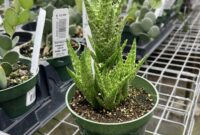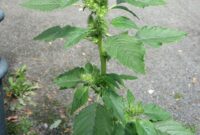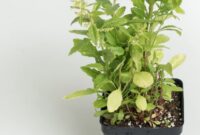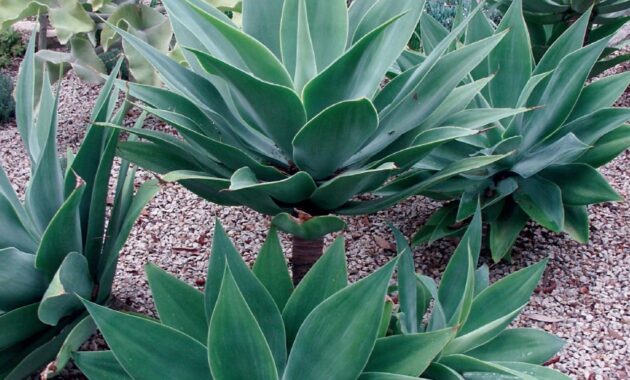
What is an Agave Plant?
Agave plants are succulent perennials native to arid and semi-arid regions of the Americas. They’re known for their dramatic, sculptural forms and low-maintenance nature. With their spiky, sword-like leaves and often-impressive size, agaves are a popular choice for both indoor and outdoor landscapes.
Growing Agave Indoors
While agaves are primarily outdoor plants, you can successfully grow them indoors. Here’s how:
- Choose the Right Pot: Select a pot with drainage holes to prevent waterlogging.
- Use the Right Soil: A well-draining cactus or succulent mix is ideal.
- Provide Adequate Light: Place your agave in a bright, sunny location. A south-facing window is perfect.
- Water Sparingly: Overwatering is a common mistake. Allow the soil to dry out completely between waterings.
- Consider Humidity: While agaves prefer low humidity, you can increase humidity around your plant by misting it occasionally.
Types of Agave Plants
There are numerous agave species, each with its unique characteristics. Some popular types include:
- Agave americana: The classic century plant, known for its large size and dramatic rosette.
- Agave parryi: A smaller, more compact species with beautiful blue-green leaves.
- Agave attenuata: The Fox Tail Agave, characterized by its soft, curved leaves.
- Agave tequilana: The Blue Weber Agave, used to make tequila.
How to Plant Agave
Planting an agave is relatively straightforward:
- Prepare the Soil: Ensure the soil is well-draining.
- Dig a Hole: The hole should be slightly larger than the root ball.
- Place the Agave: Gently place the agave in the hole, ensuring it’s at the same depth as it was in its previous container.
- Backfill with Soil: Fill the hole with soil, pressing it down gently.
- Water Thoroughly: Water the newly planted agave deeply.
Benefits of Agave Plants
Agave plants offer a variety of benefits:
- Air Purification: They can help improve indoor air quality.
- Low Maintenance: They require minimal care, making them ideal for busy individuals.
- Aesthetic Appeal: Their unique shapes and textures add visual interest to any space.
- Practical Uses: Agave nectar and syrup are popular sweeteners, and some species are used to produce fibers and rope.
Uses of Agave Plants
Beyond their ornamental value, agaves have several practical uses:
- Landscape Design: They are widely used in xeriscaping and rock gardens.
- Food and Beverage: Agave nectar and syrup are popular sweeteners.
- Fiber Production: Agave fibers are used to make rope, textiles, and paper.
- Traditional Medicine: Some agave species have medicinal properties.
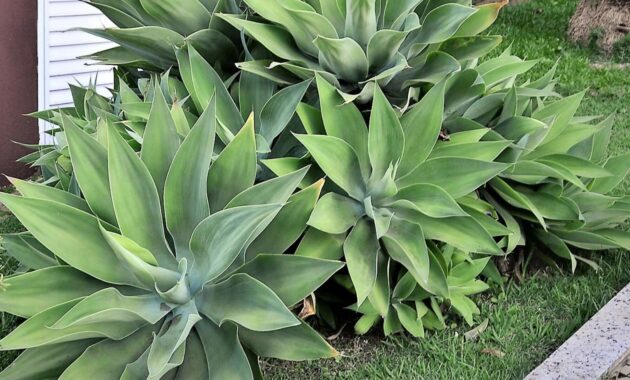
Agave Plants for Landscaping
Agave plants can be a stunning addition to your outdoor landscape. Here are some tips for using them effectively:
- Create a Focal Point: A large agave can be a striking focal point in a garden.
- Use in Mass Plantings: Planting several agaves together can create a dramatic effect.
- Combine with Other Succulents: Agave plants pair well with other succulents, such as cacti and yuccas.
- Consider the Climate: Choose agave species that are well-suited to your local climate.
Agave Plant Soil Requirements
Agave plants thrive in well-draining soil. A cactus or succulent mix is ideal. You can also create your own mix by combining equal parts potting soil, coarse sand, and perlite.
Agave Plant Sunlight Needs
Agave plants love full sun. They need at least six hours of direct sunlight per day. If you’re growing them indoors, place them near a south-facing window.
Agave Plant Watering Guide
Overwatering is a common cause of agave plant death. Here’s a watering guide:
- Summer: Water deeply once every two weeks.
- Winter: Reduce watering to once a month or less.
- Indoor Plants: Water less frequently than outdoor plants.
Agave Plant Propagation
Agave plants can be propagated by offsets or seeds. Here’s how:
- Offsets: Carefully remove offsets from the mother plant and pot them in well-draining soil.
- Seeds: Sow seeds in a well-draining seed-starting mix and keep them moist.
Agave Plant Varieties
As mentioned earlier, there are numerous agave varieties. Some popular choices include:
- Agave americana
- Agave parryi
- Agave attenuata
- Agave tequilana
- Agave victoriae-reginae
Agave Plant Lifespan
The lifespan of an agave plant varies depending on the species. Some species, like the century plant, can live for decades.
Agave Plant for Xeriscaping
Agave plants are perfect for xeriscaping, as they are drought-tolerant and require minimal water.
Agave Plant Maintenance
Agave plants are low-maintenance, but they do require some basic care:
- Monitor for Pests and Diseases: Watch out for pests like mealybugs and scale.
- Remove Dead Leaves: Regularly remove dead or damaged leaves.
- Repot as Needed: Repot your agave every few years to fresh, well-draining soil.
Agave Plant Temperature Tolerance
Agave plants are generally tolerant of a wide range of temperatures. However, they prefer warm temperatures and can be damaged by frost.
Agave Plant Growth Rate
Agave plants are slow growers. It may take several years for them to reach maturity.
Common Agave Plant Problems
Some common problems that can affect agave plants include:
- Overwatering: This can lead to root rot.
- Pests: Mealybugs and scale can infest agave plants.
- Sunburn: Too much direct sunlight can scorch the leaves.
Agave Plant Outdoor Planting
When planting agaves outdoors, choose a sunny location with well-draining soil. Plant them in a spot protected from frost.
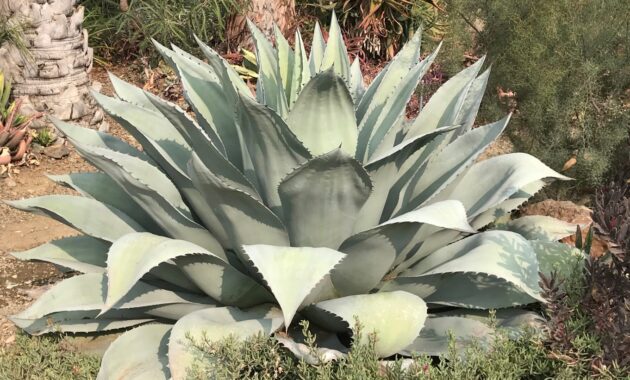
Agave Plant vs. Aloe Plant
While agave and aloe plants are both succulents, they have distinct differences:
- Appearance: Agave plants have spiky, sword-like leaves, while aloe plants have smooth, fleshy leaves.
- Growth Habit: Agave plants are often larger and more dramatic than aloe plants.
- Uses: Agave plants are used for landscaping, fiber production, and food, while aloe plants are primarily used for medicinal purposes.
Conclusion
Agave plants are stunning and versatile additions to any landscape. With their low-maintenance nature and unique appearance, they are a popular choice for both indoor and outdoor settings. By following the tips in this guide, you can successfully grow and care for your agave plants.
FAQs
- Can I eat agave leaves?
While some agave species are edible, it’s important to identify the species correctly and prepare them properly. Consult with a knowledgeable source before consuming any part of an agave plant. - How often should I fertilize my agave plant?
Agave plants have low nutrient requirements. Fertilizing once or twice a year during the growing season is sufficient. - Can I propagate my agave plant from leaf cuttings?
While it’s possible to propagate agaves from leaf cuttings, it’s a more challenging method than using offsets or seeds. It’s generally not recommended for beginners. - Are agave plants toxic to pets?
Yes, agave plants are toxic to pets. If ingested, they can cause vomiting, diarrhea, and other symptoms. Keep your pets away from agave plants. - How do I protect my agave plant from frost?
If you live in a region with cold winters, you can protect your agave plant by covering it with a frost blanket or moving it indoors.

